Beneficial Use Impairments (BUIs)
DESCRIPTIONS
From the United States Environmental Protection Agency:
 |
Added costs to agriculture or industry
This BUI is considered restored when there are no additional costs required to treat the water prior to agricultural and industrial use. All “Added Costs to Agriculture or Industry” BUIs have been removed from the Great Lakes. |
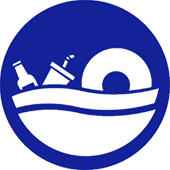 |
Degradation of aesthetics
How a water body looks can have a significant effect on the local community. The aesthetics of the AOC can be considered restored and the BUI removed when the waters are devoid of any substance that produces a persistent objectionable deposit, unnatural color or turbidity (cloudiness), or unnatural odor. Materials and events that might cause degradation of aesthetics include oil slicks, surface scum, combined sewer overflows, excessive dust, or nuisance algal blooms. As aesthetic value of a river or water body is based on public perception, AOCs can choose to include a public survey to determine if this BUI has been restored. |
 |
Beach closings
This BUI addresses waters commonly used for total body contact or partial body contact recreation such as swimming, kayaking, or standup paddle boarding. AOC waters should not violate water quality standards for this type of water use, and individuals should be able to perform recreational activities safely following guidelines. |
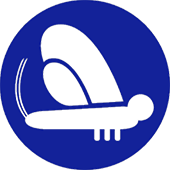 |
Degradation of benthos
Benthos are organisms that live in the sediment or near the bottom of a river or lake. Thus, sediment contamination can diminish their populations. Benthos make up the base of aquatic systems and are therefore important to ecosystem health. Some AOCs choose to remove this BUI when all remediation projects have been completed. AOC partners also study the AOC’s benthic community structure to determine if it is significantly different from non-AOC reference sites. If this data is not available, sediment contaminant levels can also be compared to non-AOC reference sites. |
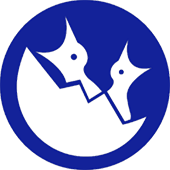 |
Much like fish tumors or deformities, bird and animal deformities or reproductive problems can occur due to genetic, viral, or chemical contaminants in the environment. Pollutants can accumulate in higher concentrations for animals further up in the food chain, such as predatory birds that eat fish or animals contaminated with these chemicals. Some examples of bird and animal deformities or reproductive problems include eggshell thinning, crossed bills, lower reproductive rates, or other birth deformities. Experts examining AOCs often study bald eagles, common terns, minks, herons, snapping turtles and tree swallows to determine the status of this BUI. |
 |
Restrictions on dredging activities
Contaminants in sediment can get stirred up and reintroduced to the water column during dredging activities, which remove sediment and debris from the bottom of a lake or river. Thus, it is important to monitor and restrict dredging activities if necessary. Sediment contaminants should not impede dredging activities or disposal of dredged material. Dredging is necessary in many areas for navigation, so restrictions on dredging can have significant negative economic impacts to a community. |
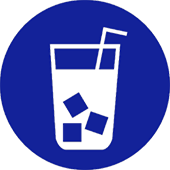 |
Restrictions on drinking water consumption or taste and odor problems
Water is normally treated before it can be used as drinking water. Treatment of drinking water coming from AOCs should not exceed conventional treatment used to treat drinking water in the Great Lakes basin. |
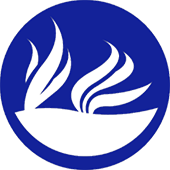 |
Eutrophication or undesirable algae
Eutrophication occurs when there is an excess of nutrients, such as phosphorous, in a water body. These excess nutrients lead to increased plant growth, which removes oxygen from the water, ultimately leading to the death of aquatic organisms. This BUI addresses persistent water quality problems attributed to eutrophication, including nuisance algal blooms, decreased water clarity, and depletion of dissolved oxygen in bottom waters. |
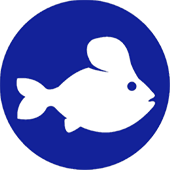 |
Fish tumours or other deformities
This BUI addresses fish tumors or other deformity rates in AOCs. Tumors and deformities in fish have three general causes: genetic, viral, and chemical contaminants. Pollutants such as petroleum products and PCBs in the sediment and water can all cause fish tumors or deformities. The rate of tumors or other deformities within the AOC, at minimum, should be no greater than a reference population of fish at a non-AOC control site in the Great Lakes basin. |
 |
Restrictions on fish and wildlife consumption
Restrictions on the consumption of fish and wildlife are related to the presences of chemicals, such as PCBs and mercury, at concentrations above a threshold deemed safe for consumers. Although BUI removal criteria are site specific, restrictions on fish and wildlife consumption in the AOC should be no more restrictive than current local restrictions as determined by chemical monitoring and assessment programs. |
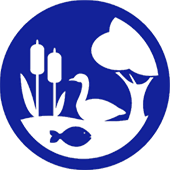 |
Loss of fish and wildlife habitat
Local AOC leaders set standards for the amount and quality of habitat required to remove this BUI. Projects to restore this BUI involve creating and reestablishing habitat with the physical, chemical, and biological characteristics necessary to support native fish and wildlife populations. Restoration actions can include removing stream barriers, enhancing shoreline complexity, removing invasive species, or restoring wetlands. |
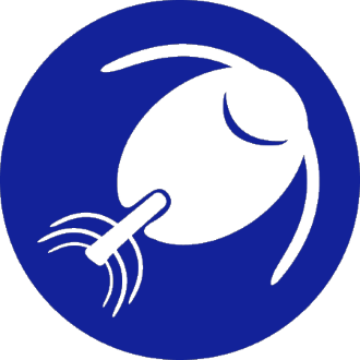 |
Degradation of phytoplankton and zooplankton populations
Phytoplankton are free-floating, microscopic plants that convert sunlight, inorganic carbon, and water into food and energy via the process of photosynthesis. As primary producers, phytoplankton are the main source of energy for the Great Lakes food web. Zooplankton are small, free-floating aquatic microorganisms. The zooplankton community is composed of both primary consumers, which eat free-floating algae, and secondary consumers, which feed on other zooplankton. Phytoplankton and zooplankton are the base of the food chain and are an important source of food for small fish. The phyto- and zooplankton of a freshwater ecosystem also serve as good indicators of water health since they are affected by slight changes in the environment, such as increased nutrient inputs or contamination. The AOC’s phytoplankton and zooplankton community can be compared to non-AOC reference sites of comparable physical and chemical characteristics to determine their health. An AOC’s water can also be tested to see if it is toxic to plankton populations. |
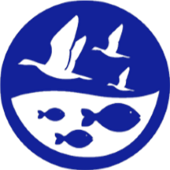 |
Degraded fish and wildlife populations
This BUI works to restore environmental conditions to support healthy, self-sustaining communities of desired fish and wildlife at levels of abundance predetermined locally. These levels are set based on what would be expected from the amount and quality of suitable physical, chemical, and biological habitat present in the AOC. |
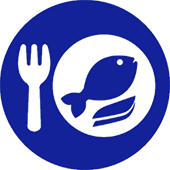 |
Tainting of fish and wildlife flavour
This BUI addresses the taste of fish and wildlife. Fish and wildlife flavor is sensitive to water quality, and the presence of certain chemical compounds, such as phenolic compounds, may impact flavor. Chemical contaminants, such as PCBs and mercury, that warrant fish consumption advisories cannot be detected through taste. Assessments of flavor, or the compounds that affect flavor should be conducted to confirm there is no tainting of fish and wildlife taste. |














